Original text by Marina Belova
In my opinion, FSL is one of the most popular things in machine embroidery. Especially judging from the all the hype on the forums and in numerous discussions: what, where and how to embroider. Read it — and you'll think that it is immensely complex, and not within the scope of anyone's ability.
Today I managed to make a few samples with different stabilizers at last, in order to find out whether it was really so difficult and whether one needed special skills for it.
I chose 3 designs for my experiment. I deliberately made them different in style.
The first design was from Zundt. The size was not big — 9.7х9.7 cm. But the stitch count was impressive — 28500.
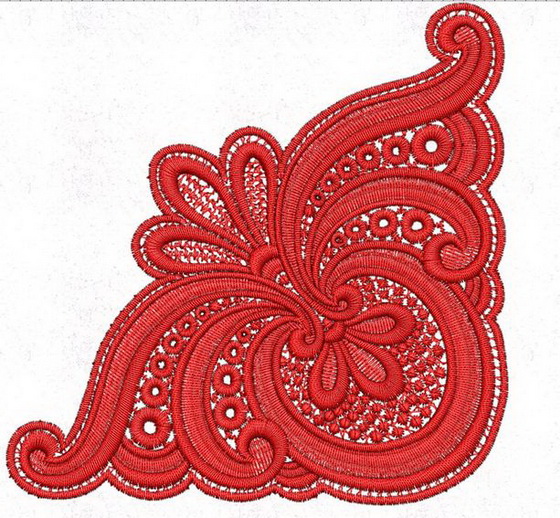
The second design was from Adorable Ideas. The size, too, was not large, 8х8, and the stitch count was 12200.

The third design was also from Adorable Ideas. The size, again, was not too big, 10.3х10.4 cm, and the stitch count was 12500.
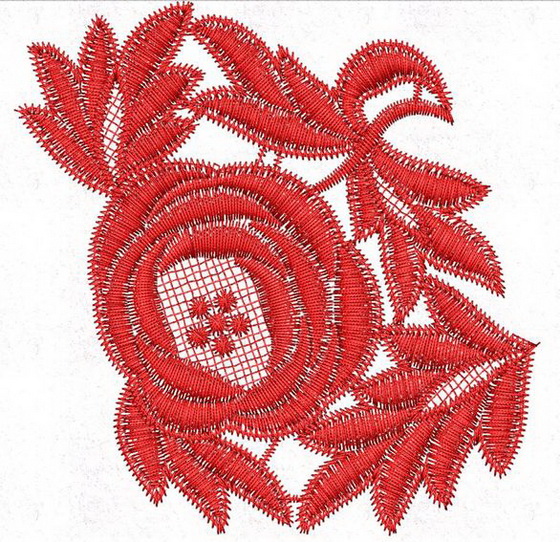
These designs got into my hands as the result of a strange accident. I ordered some CD's from the manufacturer, they got the whole thing mixed up and sent me these designs instead. Sending them back would cost a bundle. So I kept them; now they gather dust on my shelf. I became the owner of designs I didn't need. Every CD contains from 53 to 55 designs in various formats. Each one of them is in the *.emb format that allows making changes. Even our Western colleagues make mistakes sometimes.
But two of those designs came in handy.
I chose 3 stabilizers for my backing:
- Gunold Solvy 80 (40 microns) water-soluble film
- Gunold Solvy Fabric (40 g/m2) water-soluble stabilizer
- Gunold Thermogaze — a heat-away stabilizer
I decided to use one layer of each. You won't know anything until you embroider.
I used an ordinary polyester Fufu's as the upper thread. The bobbin thread remained standard.
The needle was standard, too: #70 with SES needlepoint.
So I hooped the film and decided to embroider the design that had the highest stitch count and density. This stabilizer seemed to me the most reliable of all.
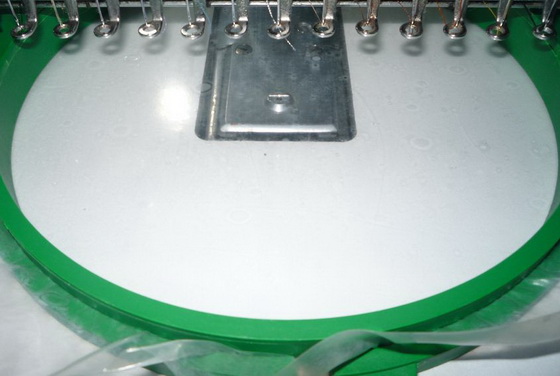
I embroidered the entire design on the film, and almost nothing was cut out (except in 2 places). Nothing was shifted at all.
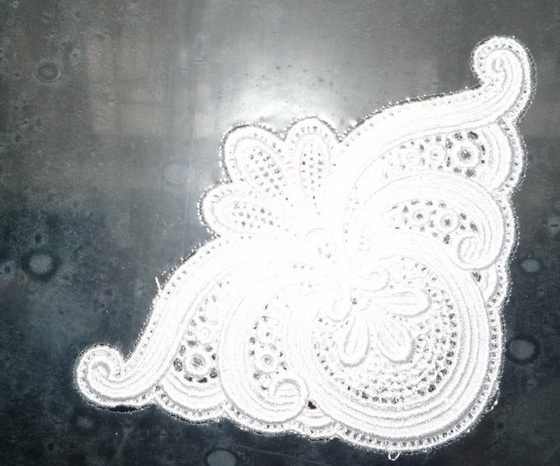
Therefore, even one of this film can be used.
The only things I did not like about this design were the high stitch count and the abundance of the short stitches. Thread breakage occurred exactly on these short stitches, which did not happen when embroidering the other designs with the same threads. In my opinion, this design should be scaled before embroidery without stitch recounting. At least by 5%.
I decided to use water-soluble stabilizer for the second design, the most open-worked of all three, considering it to be the flimsiest. It stretched well in one direction, which I didn't at all like, and I thought that there would be shifting.
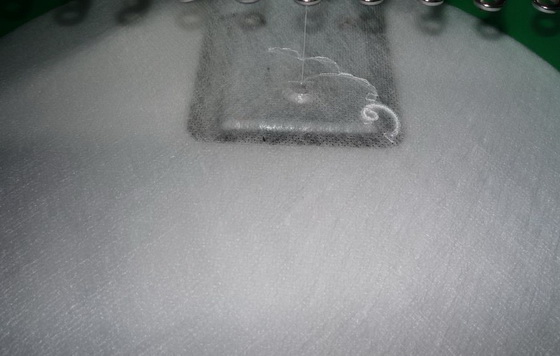
This is the ready design: nothing has shifted or lost because of the cutting. Everything came out splendid.
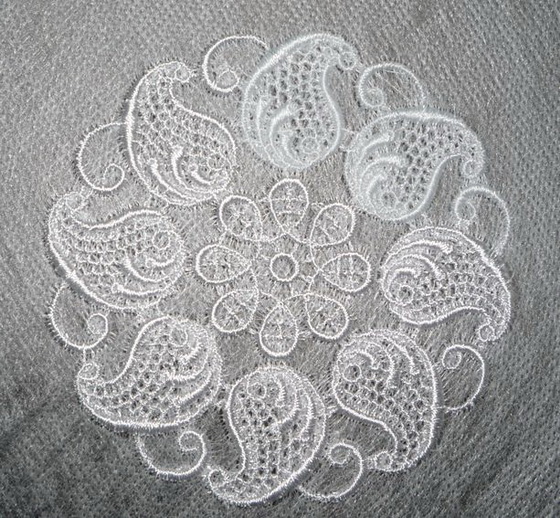
Thermogaze was third in the line, and it had issued a strange crackling noise when hooping, but I did not notice any tearing.
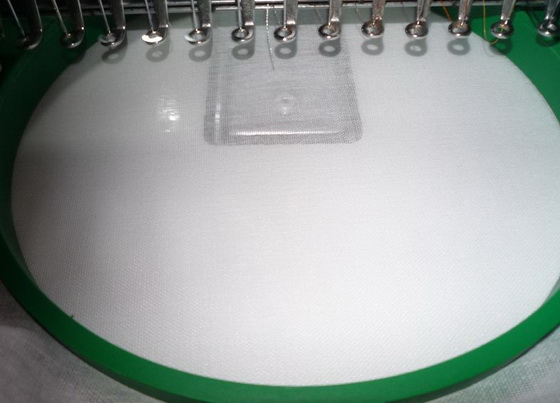
The third design was embroidered wonderfully. Though I thought that the needle would damage it.
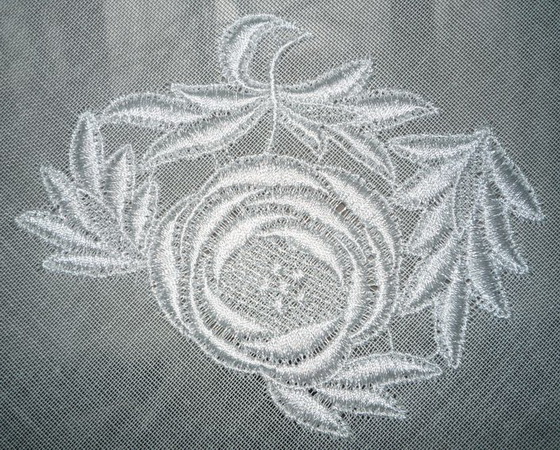
When I unhooped it, I immediately saw what that crackling noise that I heard during the embroidery hoop meant — the thermogaze between the rings tore while hooping. That reminds me that I should be more careful while hooping.
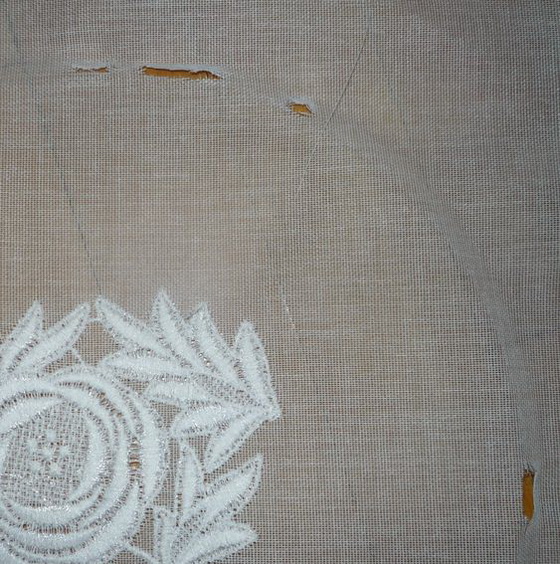
Now it's time to remove the stabilizers.
I put the water soluble materials into the bowl filled with warm water and rinsed carefully.
Water-soluble stabilizer washed off quickly and without traces — this is cutwork, after all.
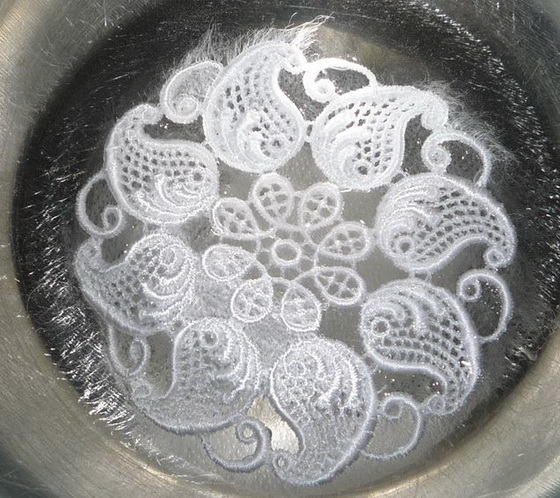
As for the film, it required some effort. The design was dense, and the film took a long time to solve.
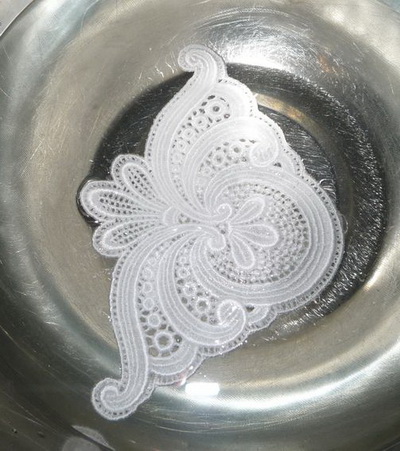
But neither first nor the second lace didn't lose it shape after having been washed and dried.

Now it was the turn of the last of the lace samples, embroidered on thermogaze.
I put it between the 2 layers of thermogaze and turned the temperature of the iron to the maximum. Then I just left the iron where the lace was.
For about one minute and a half, I think.
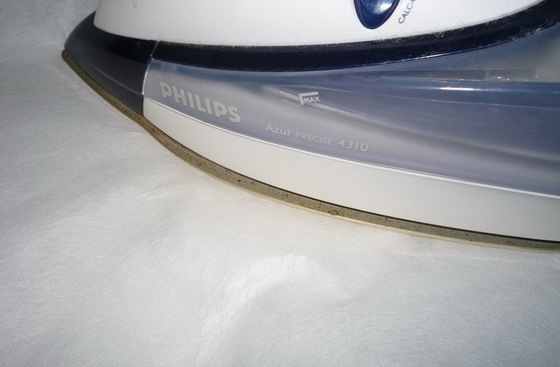
Then I decided to see what happened. The thermogaze became darker. I touched it slightly, and it broke instantly.
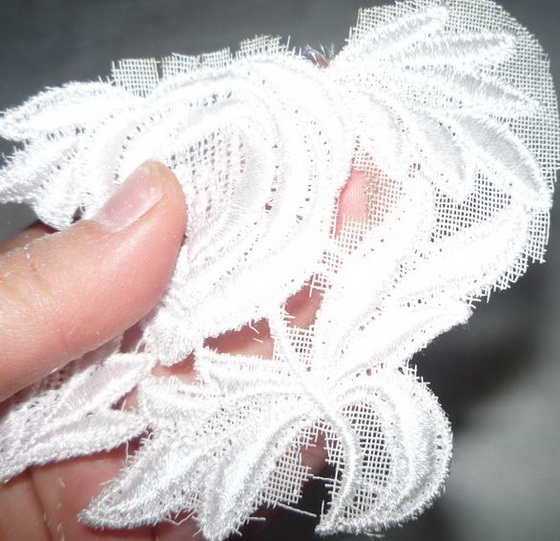
I took the lace and began to crumple it — the thermogaze easily came off and crumbled. The lace became clean and extremely soft to the touch.
This is what was left of thermogaze:
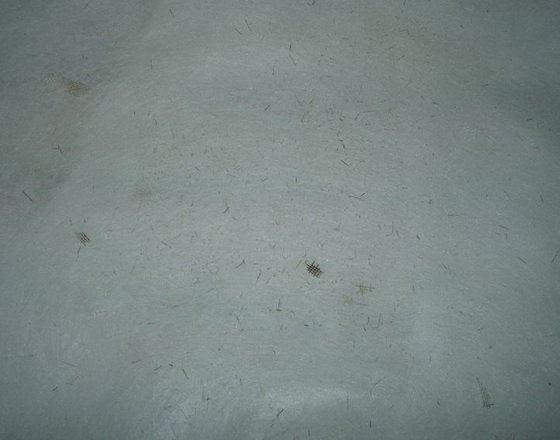
This piece of lace maintained its shape, too.
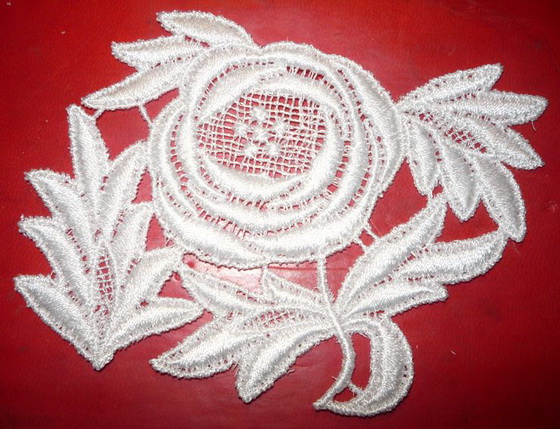
Frankly speaking, I liked thermogaze most of all — there was less trouble with removing it.
There is nothing difficult in embroidering items like these ones. I think that the whole matter of whether the result will be satisfactory or not depends only on the design quality.
Of course, I cannot claim the integrity of the test. I should have embroidered one design with each stabilizer, and compare them after that. But now, when the embroidery is completed, I think that I would get good results anyway.
Edited by Irina

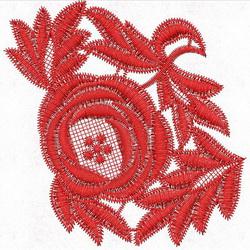

There are no reviews to display.